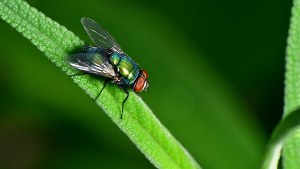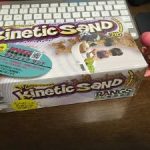
Have you decided that, in a year as tumultuous as 2020, that for your own mental health you want to start to paint?
Are you also the owner of the World’s Most Nosy Dog, who will pick up and chew or lick anything in plain sight?
And you are thinking of starting with acrylic paints?
After all, a quick look at an Amazon best seller chart shows that acrylic paints are the best selling paints- compared to watercolour or oil paints.
In this article, I explore whether acrylic paints are toxic to dogs…
What is acrylic paint?
Acrylic paint has a “thick consistency” much like oil paint but it dries a lot faster.
The paints that are available today were first created in the 1950s by people such as Henry Levinson.
Acrylic paint is also flexible in other ways because the look of it and its consistency can be changed by adding water.
Not to mention that it can be used on many different surfaces, not just paper or canvas.
And acrylic paint is very popular.
Is acrylic paint toxic to dogs?
Acrylic paint is a water based paint and so if your dog ingests it in small quantities then it shouldn’t do them any harm.
If your dog consumes lots of acrylic paint, by eating tubes of the stuff, then your dog would most likely suffer from an upset stomach and diarrhea for a day or two.
Or your dog might find the paint so repulsive that it causes them to vomit.
Can my dog get acrylic paint poisoning?
As I have said above, acrylic paint poses no real dangers to your dog unless it is eaten or ingested in large amounts.
Acrylic paint will pass through your dog’s digestive system with no lasting damage.
I mean, in the short term acrylic paint might turn a dog’s stomach upside down and cause a temporary but nasty bout of diarrhea but your dog should recover from such episodes.
If you are worried that your dog has consumed a larger quantity of acrylic paint, then the biggest danger to your dog will be if they have eaten the plastic tubes that the acrylic comes in.
A dog cannot digest plastic and so the best that you can hope for is that the paint tube “passes through” your dog without getting stuck in their throat or intestine.
It will be fairly obvious if the tube gets stuck in your dog’s throat because they will be coughing or retching- or just struggling for breath.
Needless to say, they need to be taken to the vet’s immediately.
If your dog chewed on the plastic tube before swallowing it, this might create another problem because that tube will have sharp edges that might cut or graze the dog as it moves through their system.
The easiest way of spotting if this has happened, is to watch for blood in their poop.
If these spots of blood last longer than a few days, this will also require a vet visit!
Why would a dog eat acrylic paint?
This is a very good question.
There is nothing about acrylic paint that should interest a dog.
And interestingly, it is almost odorless because it is water based- so we can’t even blame it on a strong odour.
But then again, some dogs (and particularly young dogs) do just seem to want to eat anything!
There is a well known medical condition in dogs called Pica, which is when a dog repeatedly eats non food items.
And the range is quite simply staggering- from rocks to wet wipes.
The most commonly eaten items tend to be items of clothing that have an owner’s scent on them.
And the cause? It could be a sign of a nutritional deficiency, as a result of separation anxiety or because of an underlying health condition.
I think that I have looked at acrylic paints in some detail and so now I want to move onto look at other paints
Is oil paint toxic for dogs?
Oil paint presents a far graver threat to the health of your dog than acrylic paint.
Many oil based paints use chemical solvents in them and it is these solvents which give oil paint that very thick chemical smell, with which we are all so familiar.
As these solvents evaporate, volatile organic compounds (VOCs) are released into the air.
And if a person or a dog is exposed to these fumes for too long, it can lead to dizziness, difficulty breathing and eye irritation.
Worse, some of these VOCs may cause cancer.
If your dog eats, licks or swallows any oil paint then you should get them to drink some water as soon as possible.
Watch for symptoms of oil paint poisoning in your dog (such as lethargy, vomiting and diarrhea) and be ready to take them to the vets or to phone the pet poison helpline.
Five ways to keep your dog safe with oil paints
[1] Use a non toxic and solvent free brand
[2] keep them out of a room where the oil paint is being used
[3] or to make sure that the room is very well ventilated and
[4] Never leave open tins of oil paint unattended.
[5] Consider switching to acrylic paint.
And now, I want to look at watercolors.
Are watercolors any safer to use with dogs?
Watercolors are perhaps the safest paint to use.
This is because, like acrylic paint, they are water and not solvent based.
But just because they don’t contain solvents, doesn’t mean that they are non toxic.
Is a pot of watercolor more or less interesting to a dog than a tub of acrylic paint?
The watercolor might be more tempting for a dog who likes water and is thirsty, than acrylic paint, which can look a bit like a bit of food.
Watercolors have a greater concentration of water in them than acrylic paint and so that should make them safer if they are ingested by a dog.
Paint pigments- a word of warning
All paints whether they are acrylic, oil, or watercolor use pigments to create the colour.
And some of these pigments can be toxic to a greater or lesser extent.
Traditionally, pigments were created using inorganic or organic materials.
The inorganic materials are all minerals that include cadmium and zinc!
Always read the label
The best place to start if you want to make sure that you are using a paint that is safe for you and your dog, is to read the label on the tin!
Look at some of the “ingredients” or look for a label that states “non toxic.”
If the paint that you are using is non toxic then that is great news.
If it isn’t, consider buying a non toxic brand next time.
And in the meantime, be careful how you use your existing paint.
Paw printing- the best type of paint to use with your dog
For most of this article, I have been concerned about your dog licking, eating, swallowing or chewing paint or paint tubes!
I have focused on keeping your dog safe as you paint.
But, what about if you want to paint with your dog?
Paw printing with dogs
Many families with young children love to print with their hands and feet or objects like potatoes!
And as dogs become more and more important to modern families, it is only natural to want to include their paw prints as part of the design.
In my opinion the best paint to use for a paw print is an acrylic based paint.
It is thick enough to create a great mark on the paper and it is safe enough to not harm your dog if any is absorbed through their paw or if they try to lick it off.
If you want to be as careful as possible, make sure that you have a bowl of water close to hand (and a towel) , ready to dip your dog’s paw in as soon as they have made their mark.
Closing Thoughts
Going back to your original concern about whether acrylic paint is toxic to dogs, then the simple answer is no, it isn’t.
And by all accounts, acrylic paint is fun to use and is incredibly flexible.
Acrylic paints are just one of a number of non food items in our homes that our dogs might be interested in.
And the best way of keeping our dogs safe is to be organised and clear up after ourselves!






